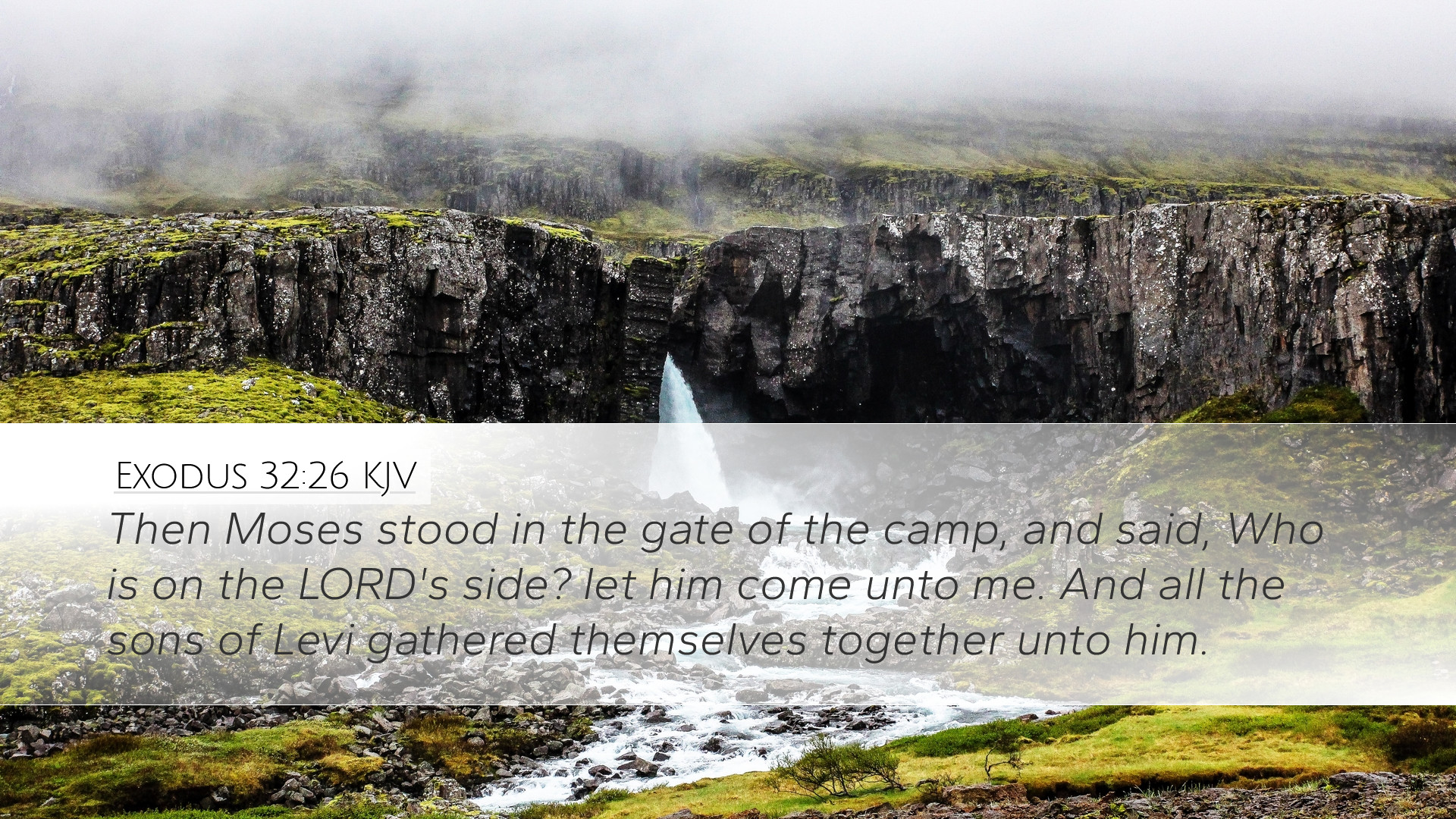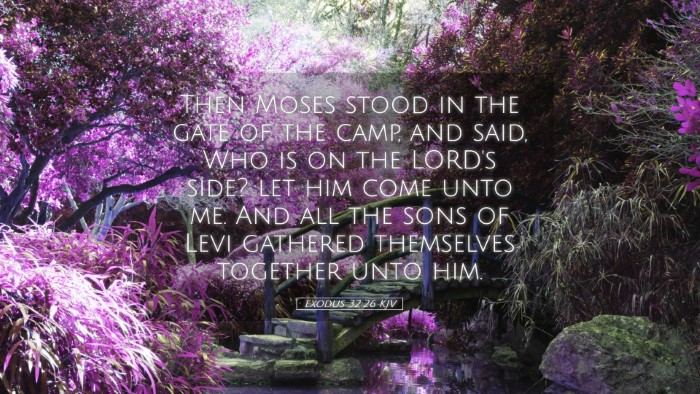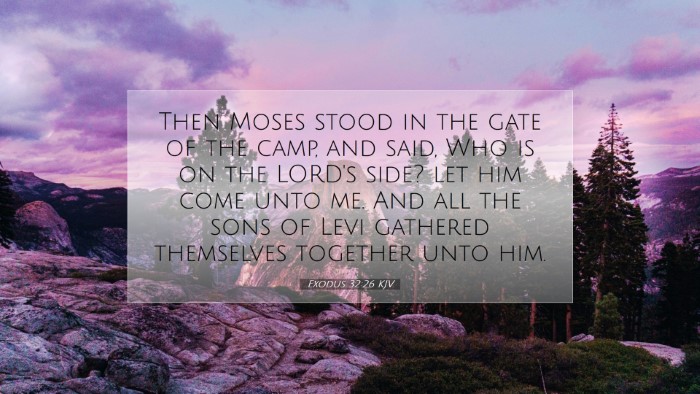Commentary on Exodus 32:26
Verse Context: Exodus 32:26 reads, "Then Moses stood in the gate of the camp, and said, Who is on the Lord's side? let him come unto me. And all the sons of Levi gathered themselves together unto him." This pivotal moment occurs in the aftermath of Israel's sin with the golden calf, presenting a serious challenge between fidelity to God and idolatry.
Summary of Key Themes
- Call to Commitment: Moses, as a leader, calls for discernment among the people, urging them to choose definitively between allegiance to Yahweh and the surrounding idolatry.
- The Levites' Response: The gathering of the Levites signifies a crucial moment of restoration and covenant loyalty despite the nation's rebellion.
- Divine Justice: This passage sets the stage for the judgment that follows, highlighting the seriousness of sin and the need for purification.
Insights from Commentaries
Matthew Henry's Commentary
Matthew Henry emphasizes the solemnity of Moses' call. He notes that it signifies a decisive point in Israel's history, where the people are challenged to manifest their loyalty. Henry observes that this act illustrates the principle of separation from sin, calling out those who are on the Lord's side. The Levites' response serves as a model for believers to adhere to godly principles, even when faced with widespread apostasy.
Albert Barnes' Notes
Albert Barnes highlights the declaration of allegiance as a powerful motivator. He indicates that Moses was not only calling for physical proximity but also a spiritual rallying. Barnes explains that the Levites' willingness to stand with Moses is a testament to their commitment to God, contrasting sharply with the general populace's infidelity. He further notes that their decisive stand was rewarded with a significant role in the worship and service of the tabernacle, emphasizing that faithfulness often leads to divine honor and responsibility.
Adam Clarke's Commentary
Adam Clarke provides an intricate analysis of the implications of this passage. He points out the duality of choice in spiritual matters: standing for God often requires vocal and physical action as demonstrated by the Levites. Clarke also touches on the theological ramifications of this moment, suggesting that Moses embodied Christ-like leadership by calling people to repentance and faithfulness. Furthermore, he underscores that true allegiance to God can necessitate a willingness to stand apart from the majority, drawing a parallel to New Testament teachings on discipleship.
Theological Reflections
This verse presents profound implications for understanding covenant relationships in biblical theology. It exemplifies a critical moment where personal and communal fidelity to God is put to the test. The thematic emphasis on choice resonates through both the Old and New Testaments—encouraging believers to examine their hearts, lives, and commitments in light of their relationship to God.
Application for Today’s Believers
- Personal Commitment: Each individual is continually faced with the choice of whom to serve. Believers are encouraged to openly declare their allegiance to God amidst societal pressures.
- Community Responsibility: Church leaders are challenged to guide their congregations in truth and to foster environments where spiritual decisions are supported through accountability and community.
- Justice and Holiness: The passage urges modern Christians to strive for purity and holiness, acknowledging that God’s call is often to stand against prevailing cultural norms that oppose His truth.
Conclusion
Exodus 32:26 serves not merely as a historical account but as an enduring call for all generations to assess whom they will serve. In a world filled with numerous distractions and idols, Moses’ challenge echoes today as a summons to fidelity, encouraging believers to gather under God’s banner and to live lives marked by unwavering devotion. The lessons learned from the Levites’ response highlight the blessings that come from standing firm in one’s faith, a timeless encouragement for all followers of Christ.


